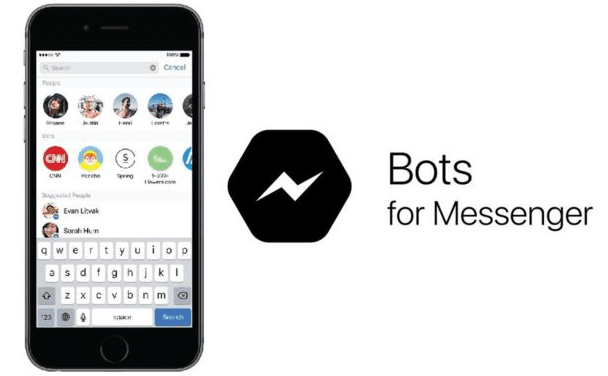Facebook's new analytics tool for Chatbots signals its desire to make bots a key part of Messenger's attractiveness to brands
Chatbots are the hot new trend that's got marketers excited this year. Their success comes from the confluence of two separate trends - the massive growth in the popularity of chat apps (which is in turn driven by the rise of mobile & social), and the development of ever more powerful AI technologies. Since Facebook announced it would support Chatbots on its Messenger app in April 2016, over 34,000 Messenger bots have been created. Whether it's Taco Bell's bot giving menu recommendations, being able to order an Uber via tapping a car icon in Facebook messenger or getting a rundown of the day's news from CNN's chatbot sent straight to you, brands have been quick to seize the potential afforded by building Chatbots within the Messenger platform.
It easy to see why they've been so keen to do so. Over one billion people use the Facebook Messenger app every month, and whilst engagement has plateaued on Facebook, people are ever more keen to chat with friends via mobile apps. As AI applications get smarter and smarter they'll be able to understand ever more complex instructions and carry out ever more complicated tasks. It is therefore, a pretty safe bet to say that the number of brands utilising Chatbots in Facebook's Messenger platform is going to continue to grow rapidly, remaining for some time on its sharply upward trajectory.

Facebook has every reason to encourage this. It makes money by selling ads on its Facebook platform - ads that sit in the newsfeed or the right side bar. But is a limitation to the type of advertising your can do on the Messenger platform. Instead, Facebook want's to monetize Messenger by making it into a platform where people buy products - opening the possibility of Facebook taking a cut. Chatbots offer the most effective way of achieving this because they allow for an easier purchasing experience than would otherwise be possible on a mobile device. Rather than filling out fiddly forms yourself, you merely need to inform the bot of your desire and it can handle the paperwork.
Facebook wants to help marketers make the case for Chatbots
So as we've established, Facebook wants to get brands using chatbots on it's Messenger platform. But developing a good Chatbot requires time, money and considerable skill. Marketers know to get investment in any idea they need to be able to justify it to the higher ups and the bean counters, and they know the best tool in their arsenal is data.
By creating an analytics system for Chatbot's it will let marketers prove the value of them and establish the ROI.
What the new analytics will deliver
The analytics will let marketers see what % of those who interact with chatbots are converting and what messages are most likely to make them convert. It will also allow the segmentation of users and provide demographic details about the segments. For example, you'll be able to see the age, gender and average income of the 10% of people who are most likely to convert. Conversely, you'll also be able to see the demographic breakdown of those who are opting out of receiving messages from your chatbot - so you can stop targeting that group in future.
These segments will be valuable data to marketers - but also a great way of generating revenue for Facebook. Facebook has announced plans to integrate these segments with its 'look-alike' audiences tool, that lets marketers target groups on Facebook with ads that are served to groups with similar information and likes to people likely to buy a companies services. This is good news for marketers, but also will increase ad sales for Facebook.
Linking Messanger analytics to wider Facebook analytics will also better allow marketers to track the effectiveness of their efforts and properly attribute what is working.
Facebook Analytics for Apps product manager Josh Twist stated:
“We want to roll all of these things together so you can understand the complete customer journey... If you have a person on a mobile app and you’ve not asked them to log in and you don’t know anything about their identity other than the device that they’re on, there’s a chance that Facebook can identify that person and therefore give you more accurate user counts, more accurate funnel flows as you think about pulling these properties together.”
What this means is that the analytics tool for measuring the activities of the chatbots can be tied in with data from Facebook’s mobile app and web analytics tools. When a marketer makes use of all of the Facebook analytics tools, they will be able to see how people are interacting across all three Facebook-owned platforms and see how people act similarly of differently between the platforms. It offers to reveal a whole host of insights previously out of the reach of marketers.
The new analytics tool is currently being developed and is being tested, is expect to be available to marketers soon. Stay tuned for future updates!







